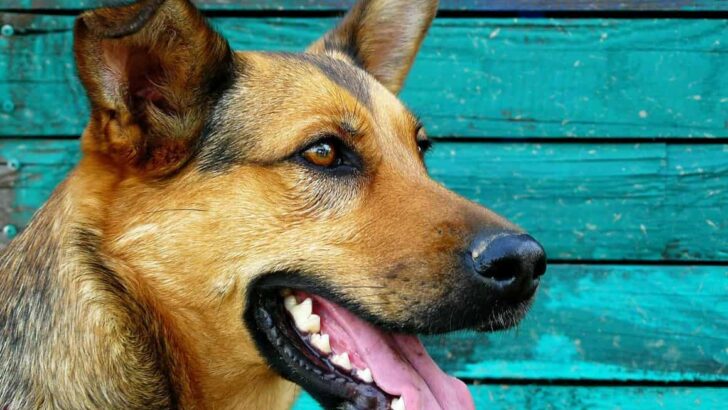- Nom Nom Dog Food Subscription Review - November 7, 2023
- 7 Best Dog Bed Ideas For Great Dane (DIY Options) - July 16, 2022
- Top 5 Rated Best Non-Prescription Diabetic Dog Food - July 15, 2022
Brushing your dog’s teeth regularly will reduce tartar and plaque buildup, keep your dog’s teeth and gums healthy, and its breath fresh. As more pet parents become aware of the necessity of canine dental care, they will be on the lookout for the best dog toothpaste for their pet. There are many excellent kinds of dog toothpaste, formulated with a range of flavors meant to appeal to the canine palate; unlike human toothpaste, which you should never use for pets, there will be no ill-effects on your dog if they happen to swallow residue from toothpaste made for dogs. You can also make your own home-made dog toothpaste by making a paste of water, baking soda, turmeric, coconut oil, aloe vera, and several other natural ingredients.
For pet parents that are well-satisfied with the commercial route, here is one commercial brand of dog toothpaste to try out for your pet:
No products found.
Using Toothpaste For Dogs
Brushing your dog’s teeth, with or without toothpaste, is a relatively modern concept. In the wild and in traditional societies, the only ways dogs can get their teeth cleaned is by chewing on bones and hard foods. Modern pet parents can incorporate these two things into their dog’s daily regimen, along with regular canine teeth brushing.
You should brush your dog’s teeth at least once a week. Using a dog toothpaste and brushing with a finger applicator or a dog toothbrush will help to keep your dog’s teeth clean, prevent plaque and tartar, and stave off tooth decay and periodontal disease. The flavor of the dog toothpaste will also make brushing a tolerable experience for your pet.
Human Toothpaste vs. Dog Toothpaste
A question commonly asked by pet parents is, “why can’t I use my toothpaste on my dog?” It would be rather convenient if it were possible. The fact is that you should never use your toothpaste to clean your dog’s teeth. Human toothpaste is meant to be brushed on, gargled, and rinsed. You are not supposed to ingest any of the foamy residue.
Dogs can’t gargle, so the toothpaste made for them is applied and wiped off, or left as it is until it is rubbed off or washed away when the dog eats something or drinks something. Your dog won’t come to any harm if they ingest it. Human toothpaste, on the other hand, can be harmful and even fatal to dogs if they happen to swallow it. Human toothpaste contains fluoride, xylitol, and other additives, which are toxic to dogs and can cause liver damage.
Selecting A Dog Toothpaste For Your Pet
Given the extensive range of dog toothpaste available, it can be tempting to fill up your shopping cart with all the interesting looking ones. That’s okay. Be tempted. Do try out different types of toothpaste and go with the ones that appeal to your dog. Keep in mind though that the dog toothpaste with chicken, beef, and other such food flavors will most likely leave your dog smelling of these foods. If you are not prepared to put with the smells all day, override your dog’s choice and go for something more bearable, like a mint or vanilla flavored dog toothpaste.
Ingredients In A Dog Toothpaste
The ingredients in a dog toothpaste are meant to help clean the dog’s teeth and also add a tasty flavor to the toothpaste so that it appeals to dogs. Some of the common ingredients you will encounter are sea salt, sodium bicarbonate, silica, peppermint oil, tea tree oil, neem oil, aloe vera, mint, vanilla, enzymes, emulsifiers, and sorbitol. Some toothpaste may contain chicken, beef, peanut, and other dog-friendly flavors.
Avoid dog toothpaste that contain alcohol and artificial sweeteners. These are not good for your dog and may lead to long-term health damage. Always read the ingredient list before buying.
Natural Canine Dental Care
If you want to try natural teeth-cleaning remedies that are anti-bacterial and free of any adverse effects, you can use coconut oil, turmeric powder, baking soda, aloe vera, parsley, and kelp. Mix these ingredients with a little water, make a paste, apply it to your dog’s teeth and gums, and massage with a finger applicator or a dog toothbrush. Like with a commercial dog toothpaste, you don’t need to rinse off the paste; it is actually beneficial for the dog if they ingest it.
You can also maintain your dog’s oral hygiene by feeding them apples, dried coconut, fresh coconut, carrots, bones, and hard biscuits. Any food that requires gnawing can be good for your dog’s teeth as it will probably scrape off plaque and tartar and prevent their build-up. Letting your dog while away their boredom on chew toys can also help with keeping their teeth clean.
Importance Of Canine Dental Care
If your dog suffers from tooth decay and periodontal disease, it will affect their ability to chew their food properly. They may not be able to digest the half-chewed food and vomit it out. The inability to chew may even put some dogs off their food. If this continues for a long while, your dog will not get the required amount of nutrients and will lose weight. This can lead to a downward spiral in the dog’s overall health.
Periodontal disease can also be a cause of heart, kidney, and liver problems from bacteria that enter the bloodstream, travel to these organs and cause infections. It is therefore important to not overlook your dog’s dental health. Make sure you brush your dog’s teeth daily or weekly. Go for professional teeth cleaning if you find it difficult or impossible to handle your dog by yourself at home.

How To Brush Your Dog’s Teeth
Depending on your dog’s personality, brushing your dog’s teeth can be a breeze or a chore that you would rather avoid. Most dogs are not likely to appreciate their teeth being brushed, but with training, patience, and careful handling, they may learn to tolerate it. Puppies may be more amenable than adult dogs. Either way, if the dog shows signs of aggression, stop immediately and leave the teeth cleaning to the veterinarian. It may be expensive, but at least it will be less traumatic than getting bitten.
If you have a dog with a stable temperament that won’t put up a fight every time, here is how to proceed with canine teeth cleaning:
Accustom your dog to having their muzzle caressed and handled, and, from time to time, gently turn up their upper lip and turn down the bottom lip to expose the teeth. Talk to them in a cajoling manner as you do so and praise them for staying still. Keep doing this until the dog stops trying to turn his head away and starts ignoring the lip uplifting and down-turning.
Next, if the dog seems calm, run your finger over the dog’s teeth and give them a treat for allowing you to do that. Repeat until the dog associates teeth rubbing with treats and appears completely comfortable with it.
Then replace the treat with a dab of dog toothpaste and let your dog get used to the taste. You may have to try different kinds of dog toothpaste to find one that your dog likes.
Once you have ascertained that your dog likes the taste of the dog toothpaste, rub it over their upper teeth and bottom teeth. You can wrap a cloth or gauze around your finger or wear a rubber finger applicator to clean the dog’s teeth. It will be easier to do the teeth cleaning in this manner than with a dog toothbrush as the dog is less likely to notice the motion.
Most dogs will take exception to having a toothbrush poked into their mouths. If you are determined to use a toothbrush, you will have to take some more time to get your dog used to that. Be sure to find a toothbrush that is of the right size for your dog.
It is important to reiterate that all dogs will not allow their teeth to be brushed, let alone touched. If your dog is fearful or aggressive, it is best to not force the issue. Let a veterinarian handle your dog or look for alternatives to brushing. Bones, hard biscuits, and chew toys can be useful in cleaning teeth, as also foods like apples, carrots, and fresh and dried coconuts. You can also get teeth-cleaning additives that only need to be added to your dog’s water to help with their oral hygiene.
To learn more about canine dental care, read the following articles on ScoutKnows :
- Inside a Dog’s Mouth: Putting the Hygiene Rumor to the Rest
- Doggie Dental: Homemade Toothpaste & Maintaining Teeth at Home
- Doggy Dental Care
Dog Toothpaste to Try
No products found.
No products found.
No products found.
No products found.
No products found.
No products found.
No products found.
No products found.

Regular canine dental care will take only a few minutes of your time and will be of immense benefit to your pet. Train your pet from an early age to tolerate their teeth being brushed, and also include foods in their diet that will act as natural teeth cleansers. This will help your dog avoid tooth decay, periodontal disease, and other dental problems, and they will be able to maintain a healthy set of teeth well into their old age.
Continue reading:
Top 10 Dog Toys for Great Dane in 2022
9 Reasons Why Your Dog Smells – And How To Fix It
Doggie Dental: Homemade Toothpaste & Maintaining Teeth at Home




